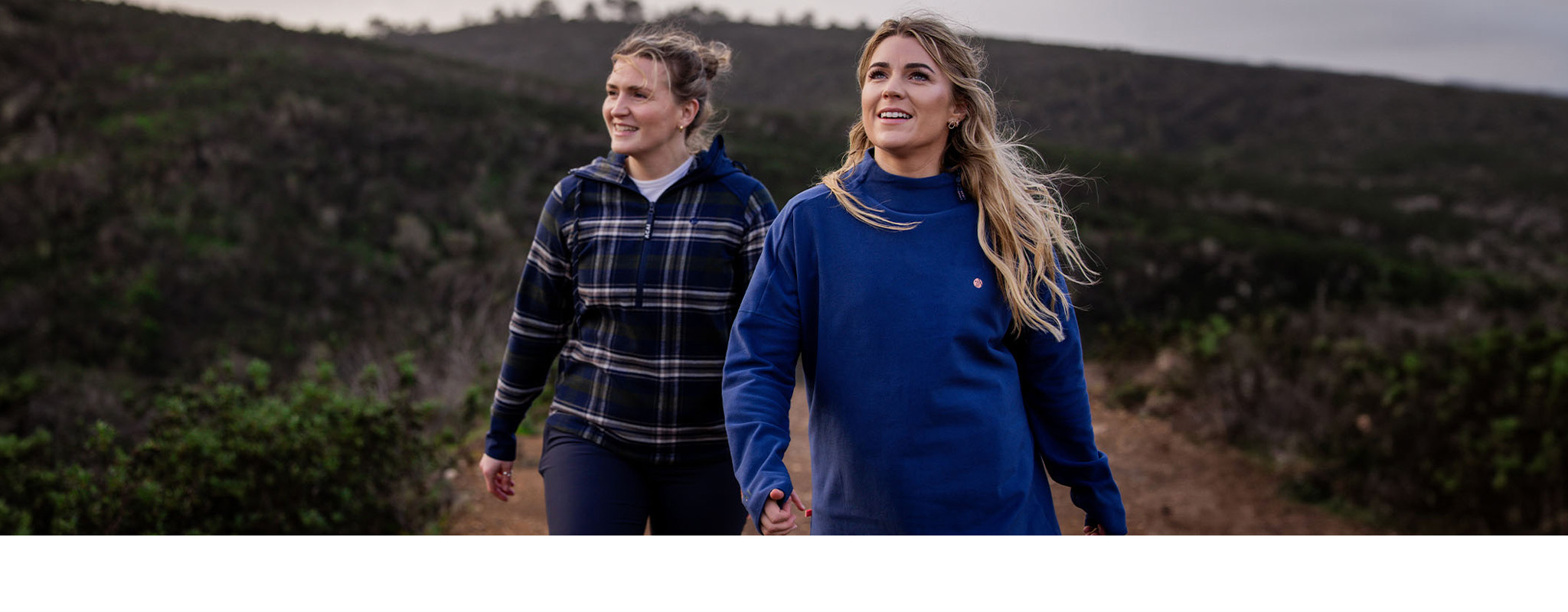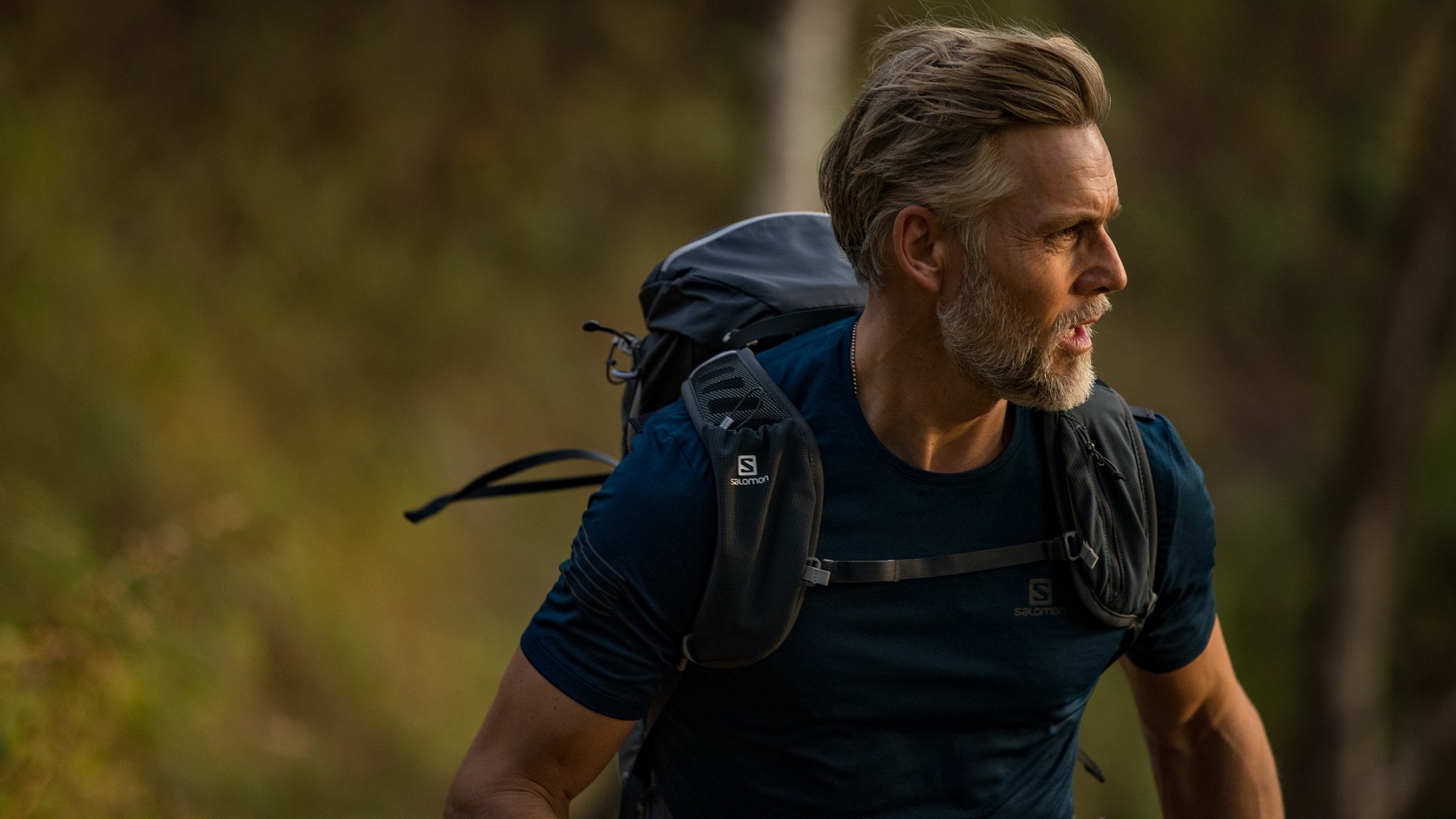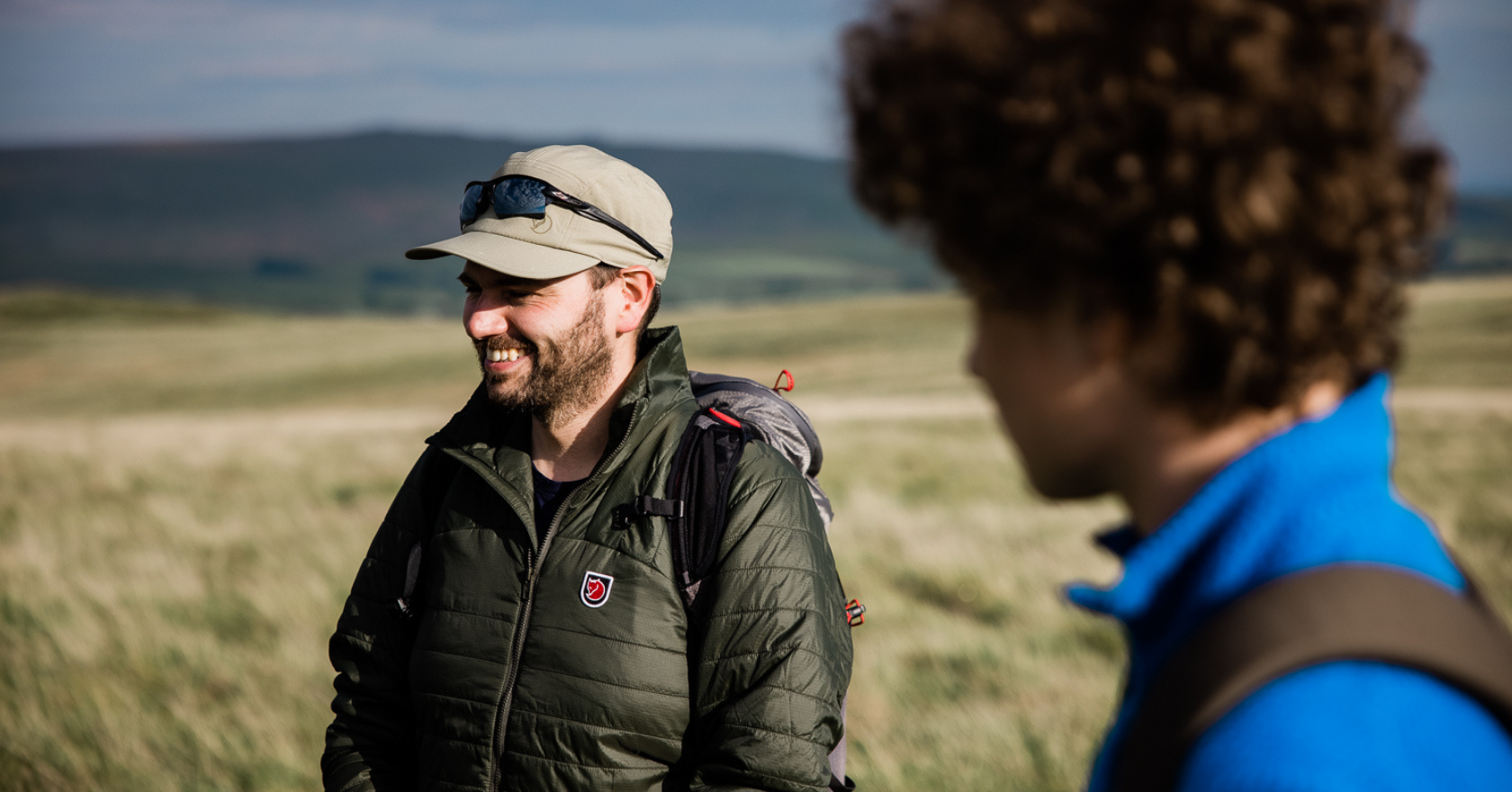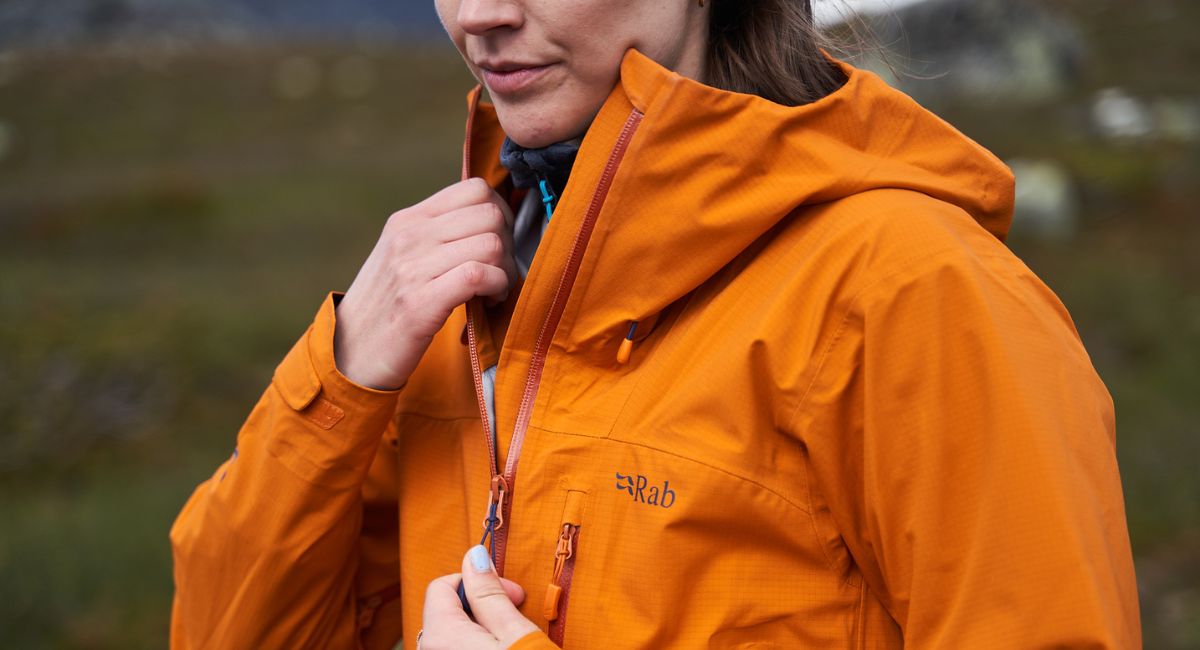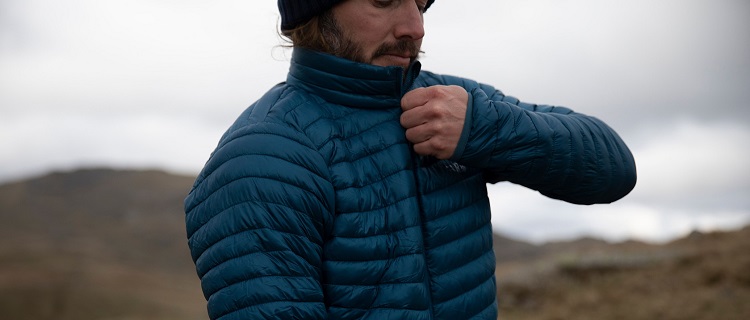For us, adventure has always been about embracing the weather, whatever it throws at us. To ensure you're equipped and protected against the elements wherever you explore this season, you must learn to use the layering system effectively. Layers are essential to keeping you dry, warm, and comfortable in all conditions. The layers you need will depend on your pursuits and the conditions around you - such as waterproof jackets for heavy rainfall and moisture-wicking baselayers for high-exertion mountaineering. Understanding how each layer works independently and as part of a well-executed layering system will help ensure you equip the correct layers for your adventure.
Your Guide to the Layering System
When it comes to dressing for the outdoors, your base layer is the foundation of the layering system. Worn directly against your skin, this crucial first layer is responsible for managing moisture and helping to regulate your body temperature-keeping you comfortable, dry, and warm no matter the conditions.
The Role of Base Layers
The primary function of a base layer is twofold:
- Moisture Wicking: Pulls sweat away from your skin, preventing that clammy, chilled feeling.
- Thermal Regulation: Helps retain body heat, creating a warm microclimate close to your skin.
By efficiently managing moisture and warmth, base layers help you stay comfortable whether you’re tackling a winter summit or enjoying a brisk autumn hike.
Materials Matter: Merino Wool and Synthetics
Not all base layers are created equal. The material you choose can make a significant difference in performance and comfort.
Merino Wool
Merino wool is a standout favorite for many outdoor enthusiasts, and for good reason:
- Natural Insulation: Keeps you warm in cold conditions, yet breathes well in warmer weather.
- Moisture Wicking: Moves sweat away from your skin, helping you stay dry.
- Odour Resistance: Naturally antimicrobial, so it resists odors and requires less frequent washing.
- Softness: Unlike traditional wool, Merino is fine and soft, making it comfortable for all-day wear.
- Versatility: Performs well across a wide range of temperatures and activities.
Because of these qualities, Merino wool base layers are a reliable choice for everything from multi-day backpacking trips to daily commutes.
Synthetic Base Layers
Synthetic materials, such as polyester and polypropylene, are engineered for high performance, especially during intense activities:
- Quick-Drying: Synthetics dry rapidly, making them ideal for high-output pursuits where you’re likely to sweat a lot.
- Lightweight: Often lighter than wool, they’re great for layering without bulk.
- Durability: Stand up well to frequent washing and abrasion.
- Affordability: Generally less expensive than Merino wool options.
If you’re into running, climbing, cycling, or fast-paced hiking, synthetic base layers are a smart choice for managing moisture and keeping you moving comfortably.
Choosing the Right Base Layer
When selecting a base layer, consider:
- Activity Level: High-intensity activities may benefit from quick-drying synthetics, while Merino wool excels in varied conditions and lower-intensity outings.
- Weather Conditions: For cold, damp environments, Merino’s warmth and odor resistance shine. In hot or humid weather, lightweight synthetics may offer superior comfort.
- Personal Preference: Some people prefer the natural feel of Merino, while others like the sleekness of synthetics.
The base layer is your next-to-skin ally, expertly managing moisture and temperature to keep you comfortable in any adventure. Whether you choose Merino wool for its natural versatility or synthetics for their high-performance edge, the right base layer sets you up for success in the great outdoors.
Once your base layer has managed moisture and regulated your core temperature, it’s time for the mid layer to step in and provide crucial insulation. Often called "the insulation layer," the mid layer’s main job is to trap body heat and keep you warm, especially when temperatures drop or the wind picks up.
What Is a Mid Layer?
Mid layers are designed to add warmth without sacrificing breathability. They come in a variety of styles and materials, including:
- Fleece jackets and pullovers
- Down insulated jackets
- Synthetic insulated jackets
Like your base layer, a good mid layer should be breathable to allow moisture to escape, preventing you from overheating or getting damp from sweat. In mild weather, you might wear your mid layer as your outermost garment. In harsher conditions, it works in tandem with an outer shell for complete protection.
Types of Mid Layers
Fleeces
Fleeces are a classic choice for outdoor activities like hiking and trekking. Here’s why they’re so popular:
- Variety of Thicknesses: Choose from lightweight, midweight, or heavyweight options to match your activity and the weather.
- Quick-Drying: Fleece dries rapidly, making it ideal for active pursuits.
- Breathable: Allows excess heat and moisture to escape, keeping you comfortable.
- Moisture Management: Retains warmth even when slightly damp, unlike cotton.
Pro Tip: Avoid cotton mid layers, as they tend to hold onto moisture, which can leave you feeling cold and clammy.
Insulated Jackets
For colder climates or high-altitude adventures, insulated jackets offer superior warmth. There are two main types to consider:
- Down Insulated Jackets:
- Exceptional Warmth-to-Weight Ratio: Down is incredibly lightweight and highly packable.
- Compressible: Packs down small, making it easy to stash in your backpack.
- Best for Dry Conditions: Down loses insulating power when wet, so it’s ideal for cold, dry environments.
- Synthetic Insulated Jackets:
- Retains Heat When Wet: Synthetic fibers continue to insulate even if they get damp.
- Durable and Easy to Care For: Handles rough use and frequent washing better than down.
- Versatile: Performs well in a range of conditions, including wet or unpredictable weather.
Choosing the Right Mid Layer
Selecting the perfect mid layer depends on your activity and the environment:
- Consider Your Activity: High-output activities like hiking or cross-country skiing may only require a lightweight fleece, while mountaineering or winter camping might call for a down or synthetic insulated jacket.
- Match to Conditions: For wet or variable weather, synthetic insulation is a safe bet. For cold, dry days, down offers unbeatable warmth.
- Layering Flexibility: Sometimes, combining a fleece with a thin insulated jacket gives you the best of both worlds.
The mid layer is your customisable insulation system, designed to keep you warm and comfortable as conditions change. Whether you reach for a cozy fleece or a high-tech insulated jacket, choosing the right mid layer ensures you stay warm-without overheating-on all your outdoor adventures.
Outer Layers:
Reliable weather protectionYour outer layer is your protection from the elements - wind, rain, snow, and everything in between. A good outer layer will protect you against wind and rain, while also allowing the moisture and heat from your body to escape so you don’t overheat during high-exertion activities. You need to ensure you pick the right outer layer for your activity. Here are all the different outer layers you can choose from:.
Hard Shells
The waterproof hard shell is the classic outer layer that defends against the most adverse conditions. Features of these jackets include taped seams and suitably weatherproof zips to ensure rain stays outside, not inside. Durable Water-repellent (DWR) coated hard shells can also work well as a lighter outer layer in warm conditions for low-intensity activities.
Softshells
Depending on weather conditions, your outer layer may not necessarily need to be fully waterproof. In this instance, Soft Shell Jackets offer a fantastic alternative with excellent comfort, stretch, flexibility, and wind resistance and are more breathable than waterproof hard shells. In cool conditions, soft shells can also work as an excellent alternative mid-layer, especially when paired with a waterproof hard shell on top.
Insulated Jackets
In icy cold conditions, an insulated, synthetic, or down jacket is a highly effective outer layer to keep you warm. However, having a waterproof outer layer to hand is still important if there’s any chance of rain or snow.
Examples Of When To Use Your Layers...
Understanding how and when to use each part of the layering system is key to staying comfortable and protected in the outdoors. Here are some practical scenarios to help you decide which layers to wear and when to pack extras.
1. A Walk on a Warm, Dry Day
On pleasant, sunny days with little chance of rain or wind, simplicity is your friend. You won’t need to pile on the layers, but comfort and moisture management are still important.
- What to Wear:
- A lightweight, moisture-wicking base layer (such as a technical t-shirt or tank top).
- Why: This helps your sweat evaporate quickly, keeping you cool and dry as you walk.
- Tip: Choose light colors to reflect the sun and stay even cooler.
2. A Hilly Walk on a Warm but Rainy Day
Warm weather doesn’t always mean clear skies. If you’re heading out for a walk with the possibility of rain or wind, a little preparation goes a long way.
- What to Wear:
- Start with a comfortable, moisture-wicking base layer.
- Pack a second layer for protection against changing conditions.
- What to Pack:
- A lightweight soft shell jacket for wind protection as you ascend hills.
- A waterproof hard shell jacket to keep you dry if the rain starts.
- Why: The base layer will keep you cool and dry, while the outer layer can be added quickly if the weather turns.
- Tip: Choose packable jackets that fit easily in your backpack without adding bulk.
3. A Hilly or Mountain Hike on a Cold, Rainy, or Windy Day
When you’re heading into the hills or mountains and the forecast calls for cold, wet, or blustery weather, it’s time to use the full layering system. This approach helps you adapt to rapidly changing conditions and stay safe.
- What to Wear:
- Base Layer: Moisture-wicking and snug against the skin to manage sweat.
- Mid Layer: Insulating fleece or an insulated jacket (synthetic or down, depending on the likelihood of rain).
- Outer Layer: Breathable, waterproof shell to shield you from rain, snow, and wind.
- Why: Each layer has a specific job-wicking moisture, trapping warmth, and blocking the elements-so you can add or remove layers as needed.
- Tip: If you expect heavy rain, opt for synthetic insulation in your mid layer, as it retains warmth even when wet.
The beauty of the layering system is its flexibility. By choosing the right combination of base, mid, and outer layers for the day’s conditions, you’ll stay comfortable, dry, and ready for anything the outdoors throws your way. Always check the forecast, think ahead, and pack smart-your future self will thank you!
Layering Guide FAQs
The layering system involves wearing multiple thin layers of clothing to trap heat efficiently and manage moisture. This approach keeps you warm, dry, and comfortable by allowing you to add or remove layers as weather or activity levels change, making it ideal for unpredictable outdoor conditions.
The three main layers are:
- Base layer: Worn next to the skin, wicks moisture and regulates temperature.
- Mid layer: Provides insulation by trapping body heat.
- Outer layer: Protects against wind, rain, and snow while allowing moisture to escape.
Cotton absorbs sweat and holds moisture, which can make you feel cold and uncomfortable. Unlike synthetic or merino wool base layers that wick moisture away from your skin, cotton stays wet and draws heat away from your body, increasing the risk of getting chilled.
For base layers, choose moisture-wicking fabrics like merino wool or synthetics. Mid layers should be insulating and breathable, such as fleece or down. Outer layers need to be windproof and waterproof, using materials like Gore-Tex or other breathable membranes to keep you dry and comfortable.
Yes, the layering system is adaptable for all weather conditions. In cold weather, use all three layers for warmth and protection. In warmer weather or during high-exertion activities, you can remove layers to avoid overheating, always keeping a base layer for moisture management.
The system traps warm air between layers, creating insulation, while breathable fabrics move moisture away from your skin. This keeps you warm when it’s cold and helps cool you down by allowing sweat to evaporate when you’re active or the temperature rises.
Related Articles

Let us know you agree to cookies
We use marketing, analytical and functional cookies as well as similar technologies to give you the best experience. Third parties, including social media platforms, often place tracking cookies on our site to show you personalised adverts outside of our website.
We store your cookie preferences for two years and you can edit your preferences via ‘manage cookies’ or through the cookie policy at the bottom of every page. For more information, please see our cookie policy.
